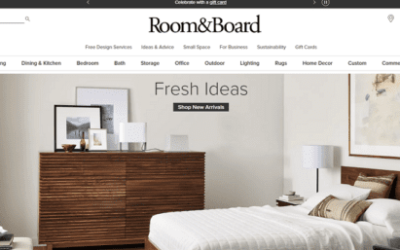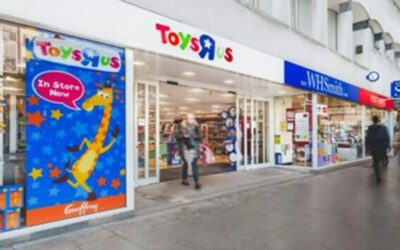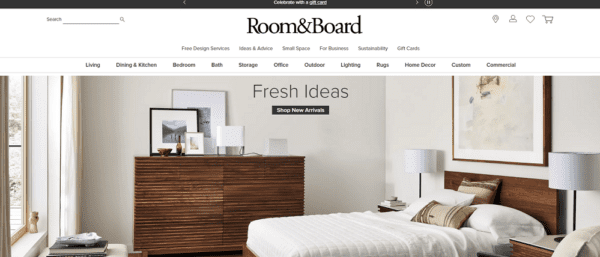4 Strategies from the Most Visible Retail Brands


In today’s retail industry, marketers are under tremendous pressure to hone their strategies in order to elevate their digital presence above that of competitors. Demand, social engagement and customer preferences are always evolving, together and separately. It’s crucial for retail marketers to adapt accordingly. Fortunately, retailers can learn valuable lessons from the most digitally sophisticated retail brands.
Based on a comprehensive analysis of the retail sector in 2023, we can pinpoint four key retail strategies that are currently elevating the presence of some of the most visible retail brands in digital. SOCi evaluated 100+ key differentiators across Google, Yelp and Facebook for locations of top retail chains, analyzing prominence in search, usefulness and accuracy of online store profiles, rate of new reviews, review response times, average ratings, engagement with consumers on social platforms, and many other search and social performance factors. SOCi’s 2023 Local Visibility Index (LVI) provides a comprehensive evaluation and ranking of the leading U.S. retail brands. Let’s delve into what those brands are doing to stay prominent in the minds of consumers, and what brand marketers can do to gain a competitive edge.
Commit to Improving Online Visibility and Reputation Management
Enhancing visibility and discoverability online is always critical for retailers, especially when it comes to search engine results. Providing helpful online profiles on popular sites like Google, Yelp and Facebook is an ongoing commitment that retailers can’t allow to slip into autopilot mode.
One of the top goals for any retailer is to ensure their brand appears on the first page of local Google results — after all, when shoppers know what products or product categories they need, proximity and availability are frequently more important deciding factors than any specific retailer’s brand name. As it stands, retail brands typically appear on the first page only 54% of the time, according to SOCi’s 2023 LVI. There’s a very high level of competition in getting onto the first page, and the stakes for the retailer’s bottom line are just as high.
Reputation management is crucial in boosting search visibility. Star ratings and written testimonials from other customers are a critical deciding factor for shoppers’ journeys. And yet, overall reputation scores tend to be relatively low for retailers: SOCi assigned an overall reputation score to retailers of 43 points out of a possible 100, taking into account average ratings, review counts, pace of new reviews and rate of responses.
Increasing ratings and response rates on relevant platforms must be a top priority for retailers, and active engagement with reviews is vital in building a brand’s reputation. Brands need to focus on providing great customer experiences in stores and on responding in a timely and personal manner to users when they have feedback.
Don’t ‘Ghost’ Customer Reviews and Queries
Ghosting — an all-too-common bad habit among retailers — is when consumers ask questions and leave reviews of brands, only for the brand to neglect acknowledging them. These are clear opportunities for retailers to engage with consumers and demonstrate they value their business. And yet, the average response time among retailers is eight days for Google reviews. Even then, retailers respond to only 30% of the reviews they receive, according to SOCi’s 2023 LVI.
Improving response rates and times can greatly enhance customer satisfaction and overall brand perception, because it communicates to consumers that the brand hears them and wants to build strong relationships with them. Responding to reviews is also essential for improving the effectiveness of online profiles; SOCi research shows that more customers choose businesses that respond to their reviews.
More than just reviews, retailers need to pay attention to the questions and comments they receive on social platforms and in features like Google’s Q&A tool. This will bolster service quality and — when managed successfully — sales opportunities. AI can provide critical assistance in both automating and personalizing responses so that every customer feels heard and cared for.
Focus on High-Performing Categories and Seasonal Opportunities
Retailers naturally tend to focus attention on the top-performing product categories in their stores; enhancing exposure for popular products and product categories online is equally important. No matter how narrow or broad a retailer’s offerings, it’s essential to monitor sales of all subcategories within stores, and to create a corresponding digital strategy.
Retailers should also make sure digital is in the mix when thinking about seasonality. Seasonality goes beyond major holidays and events, such as Black Friday, when overall sales are up. Consider, for example, when consumers are buying winter or warm-weather sporting goods, what gardening or home improvement items consumers seek out in the spring and summer, and food and beverage consumption habits throughout the year. Tools like Google and Facebook posts can be very useful in broadcasting seasonal offerings.
Don’t Forget about Social Media
Social platforms are another area where retailers can benefit from greater levels of activity and attention. Retailers perform well on Facebook according to some metrics, averaging 15 posts per location per month, compared to nine for the average business. The average retailer’s social posts each garner around 18 user reactions, four comments and two shares, according to SOCi’s 2023 LVI.
With all of the shifts in the social media landscape over the years, Facebook remains fertile territory for retailers to build relationships with consumers, with retail outperforming other verticals there. This creates, of course, a higher bar for retailers that want to stand out from competitors.
Looking forward, retailers need to work toward projecting a strong brand voice on social platforms and being responsive to user inquiries and comments. Platforms like Instagram and TikTok are trending upwards in their usage for search, including searches for products and local retailers, and this is especially true for younger consumers. Brands need to make sure their social strategies properly reflect the preferences of their target audiences.
A retail business includes a great number of interlocking functions, and each retailer faces issues specific to its category and consumer base. But these four approaches can help retail brands navigate the complexities of the digital environment, ensuring retailers thrive in today’s competitive marketplace.
Damian Rollison is Director of Market Insights at SOCi. With a background in writing, research, and technology, Rollison has focused his career on building innovative products that help businesses large and small get noticed online. Rollison’s interest in the space has led to writing and speaking engagements with Street Fight, Search Engine Land, Marketing Land, Localogy, Venture Beat, BIA/Kelsey, SMX, Social Media Strategies, State of Search and others. Rollison is currently the Director of Market Insights at SOCi, which is an award-winning platform built specifically for “next-level” multi-location marketers. Their customers include top brands and influencers like Ace Hardware, Sport Clips and Anytime Fitness that have the impossible challenge of managing their digital presence across hundreds and thousands of locations.











